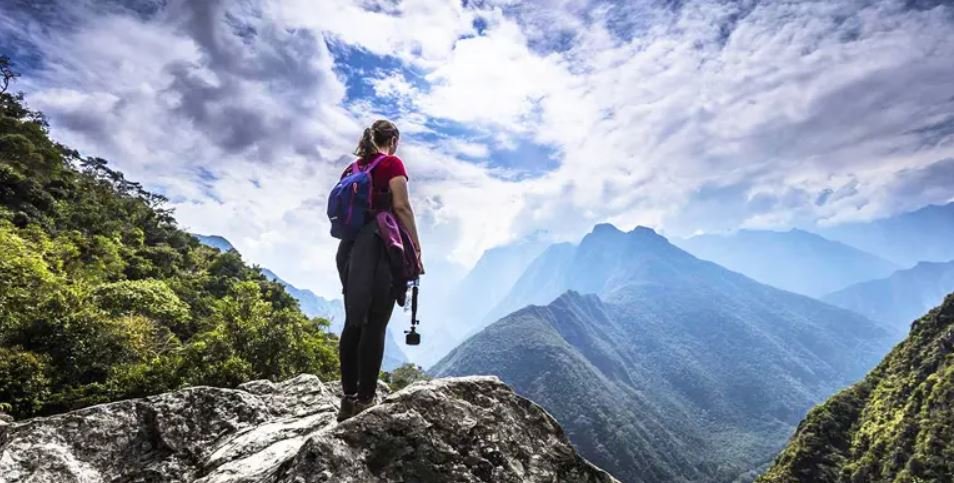6 scenic hikes through the Andes
If the Inca Trail is exhausted or you prefer to hike remote and little known trails, these 6 alternatives to the Inca Trail are the best trekking options in the majestic Andes mountain range of Cuzco.
The classic 4-day Inca Trail route to the Sun Gate of Machu Picchu is one of the most popular in the world. Because of this, it is also one of the most requested in terms of visitors coming from far away, and the quotas that are granted every day to cross this incredible route are less and less, so there are six phenomenal alternatives to the Inca Trail that you can add to your trip to Peru.
Since 2001, the Peruvian government has been enforcing strict regulations to preserve the ancient Inca Trail. Every February it is closed for maintenance, and on other days of the year there are only a total of 500 daily permits available (200 for hikers and 300 for staff). As a result, visitors planning to hike the Inca Trail often find that permits sell out several months in advance due to limited availability and high demand, but don’t worry if you want to hike to the historic citadel of Machu Picchu you also have other fantastic options, whichever route you choose, you are guaranteed an unforgettable experience in the heart of the Inca empire.
Alternatives to the Inca Trail
1. Salkantay Trek/Salkantay Trek
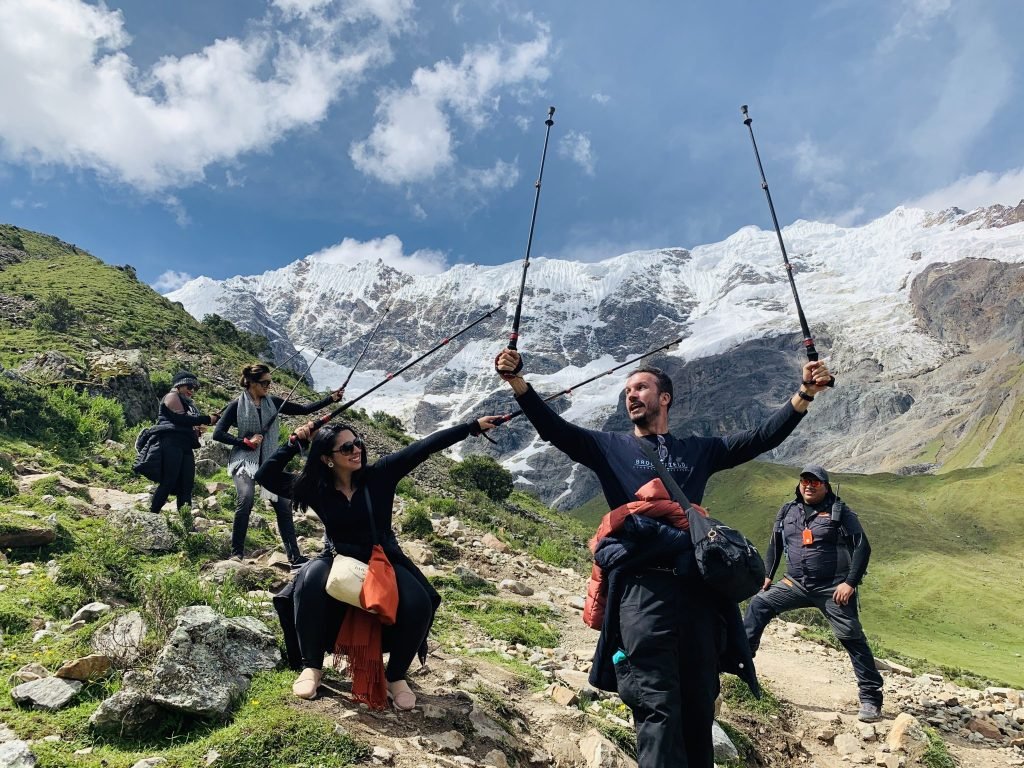
The Salkantay Trek is the most popular alternative trek to the Inca Trail for those who wish to walk to the citadel of Machu Picchu. This trail follows part of the Qhapaq Ñan, the ancient network of roads built by the Incas that traversed several countries in South America. It ascends through the mountains, gradually increasing in altitude until it reaches the Salkantay Pass. From there, the hike descends towards Machu Picchu and the jungle.
Details of the trek:
- Duration: 5 days/4 nights
- Difficulty level: Moderate to difficult
- Highlights: Mountain spirits, varied scenic beauty and local farms.
- Starting altitude: 4,200 m (13,780 ft)
- Maximum altitude: 4,600 m (15,090 ft)
- Total distance: 51 km (31 miles)
| Salkantay Trek | Inca Trail | |
| Duration and distance | 5 days | 4 days, 30 miles |
| Requirement of an advance permit | No | Yes, the 4-day Inca Trail permit must be booked in advance. |
| Arrival at Machu Picchu | Arrival by bus | Arrival by foot through Puerta del Sol |
| Camping or hotel nights | 3 nights camping and 1 night hotel accommodation | 3 nights camping |
| Porters | Pack animals can help carry belongings during the day 4 | Personal porters can be hired in advance. No pack animals are allowed on the Inca Trail. |
Salkantay Trek Itinerary
Day 1
From Cuzco, hikers will take a car to Mollepata, where they will begin their journey through the Salkantay route. Visitors will hike through the Rio Blanco Valley, where they will arrive at their first campsite in Soray Pampa. The first day ends with breathtaking views of the Salkantay and Humantay snow-capped peaks.
Optional activity: In the afternoon, weather permitting, an excursion to the Humantay Lake is possible.
Day 2
During your second day of trekking, which is the longest and most challenging, you will cross extreme terrain among the Andes Mountains. Hikers pass through the steep Salkantay Pass before descending the Salkantay River. Warmer, lusher forests await at lower altitudes. This is the most strenuous day of the trek, but by far the most beautiful and satisfying because of the unique scenery you will see along the way. With breathtaking views of the Vilcanota mountain range and the unique subtropical microclimate of the Cusco valley, you will be treated to many great photo opportunities during this stage of the trek.
Day 3
Continuing your journey, the trail you will hike along the Santa Teresa River until you reach a small village of the same name. In this high jungle area, hikers will pass coffee, tea, sugar cane, avocado and passion fruit farms. Hikers will also have the opportunity to interact and live with local farmers for an extraordinary and very educational cultural experience.
Optional activity: In the afternoon, if time permits, you can visit the Santa Teresa hot springs.
Day 4
The fourth day begins with a gradual ascent to the archaeological complex of Llactapata. Visitors crossing the Salkantay route will be able to have a first view of the Machu Picchu citadel from afar. After visiting Llactapata, hikers cross the last stage of the Salkantay trail, ending at Hidroeléctrica. From there, you will take a train route to Aguas Calientes, the small town located at the base of the mountain that houses the citadel of Machu Picchu.
Day 5
After a good night’s rest in a Machu Picchu hotel, hikers ascend to the citadel of Machu Picchu to continue their guided tour through the citadel. If you wish, you have the option to hike Machu Picchu mountain or its better known neighbor, Huayna Picchu mountain. If you wish to get the best aerial views of the Lost City we recommend taking these additional routes. After the visit, hikers will have some time to get to know the small Machu Picchu village before returning to Cuzco by train.
Permits to climb Machu Picchu Mountain and Huayna Picchu are limited and must be obtained months in advance.
Alternative options:
- A faster 4-day/3-night version is available for hikers with more experience on high elevation routes.
- There is also a longer 7-day/6-night option that involves staying in luxury mountain lodges along the way. This lodge to lodge Salkantay trek is a phenomenal alternative, but is a much more expensive but also a much more complete experience.
2. Trek to Lares
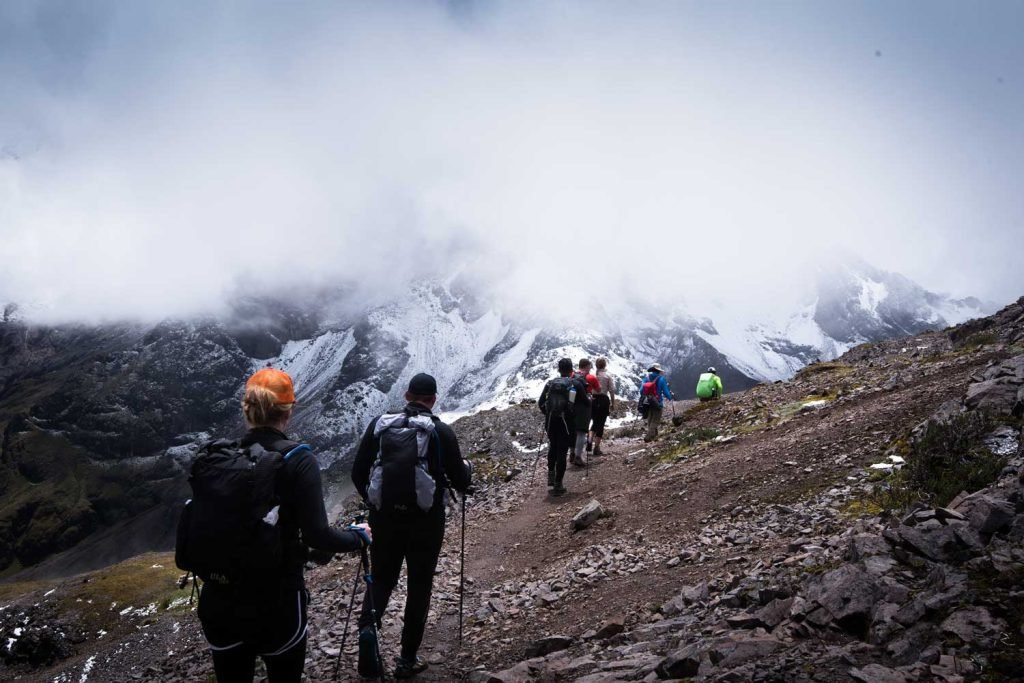
This route to the citadel of Machu Picchu is also known as the “route of the weavers”, to do it you will have to start in the Sacred Valley. Over 4 days and 3 nights, the trail winds through small villages and ruins of the beautiful valley to end in Ollantaytambo. From there, hikers take the train to Aguas Calientes to explore Machu Picchu.
Trekking Data:
- Duration: 4 days/3 nights
- Difficulty: Moderate
- Highlights: Breathtaking mountain views, Andean culture and hot springs.
- Starting altitude: 2,925 m (9,596 ft.)
- Maximum altitude: 4,450 m (14,600 ft)
- Total distance: 34 km (21 miles)
| Lares Trek | Inca Trail | |
| Duration and distance | 4 days, 21 miles | 4 days, 30 miles |
| Advance permit required | No | Yes, the 4-day Inca Trail permit must be booked in advance. |
| Arrival to Machu Picchu | Arrival by bus | Arrival on foot via the Sun Gate |
| Camping or hotel nights | 2 nights camping, 1 night in hotel | 3 nights camping |
| Porters | Pack animals can help with belongings during day 3. | Personal porters can be hired in advance. No pack animals are allowed on the Inca Trail. |
Itinerary of the Camino de Lares
Day 1
The route through Lares begins in Calca, a small town in the picturesque Sacred Valley. The trail passes through a variety of Andean villages where the locals continue the traditions of their ancestors, cultivating high altitude products and weaving remarkable textiles, this experience will offer you a closer coexistence with the members of these communities and make your experience much more cultural. Near the town of Lares, hikers can head to the hot springs for a well-deserved rest. In the afternoon your route continues with the descent to Huacahuasi for your first night of camping.
Day 2
Walking alongside herds of alpacas and llamas, you will gradually ascend to the Ipsayccasa pass, reaching the highest elevation you will encounter along the hike. The views of snow-capped Veronica and the surrounding peaks are iconic, and you will be able to take wonderful photos of the views from this peak. Descending to Lake Ipsaycocha, you will have a lunch break before continuing the descent to the village of Patacancha. A distinctly traditional Quechua village, trekkers are invited to experience their way of life before continuing to your Pumamarka campsite, resting at your second campsite located between two mountains.
Day 3
From Pumamarka, your trek will continue downhill to Ollantaytambo, passing small archaeological complexes that you can visit along the way. After lunch in Ollantaytambo, you will take the afternoon train to Aguas Calientes. Located just below Machu Picchu, hikers can shower and rest at their hotel in this village for the night.
Day 4
Finally, rise early in the morning to head to the citadel of Machu Picchu. You can also take the challenge of hiking Machu Picchu Mountain or Huayna Picchu Mountain: two additional hikes inside the citadel that offer breathtaking views from the altitude. After the hike, you will tour the sanctuary with your guide and then leave the city by train to Cusco.
Permits to climb Machu Picchu Mountain and Huayna Picchu are limited and must be obtained in advance.
3. Lares + Inca Trail 2 days
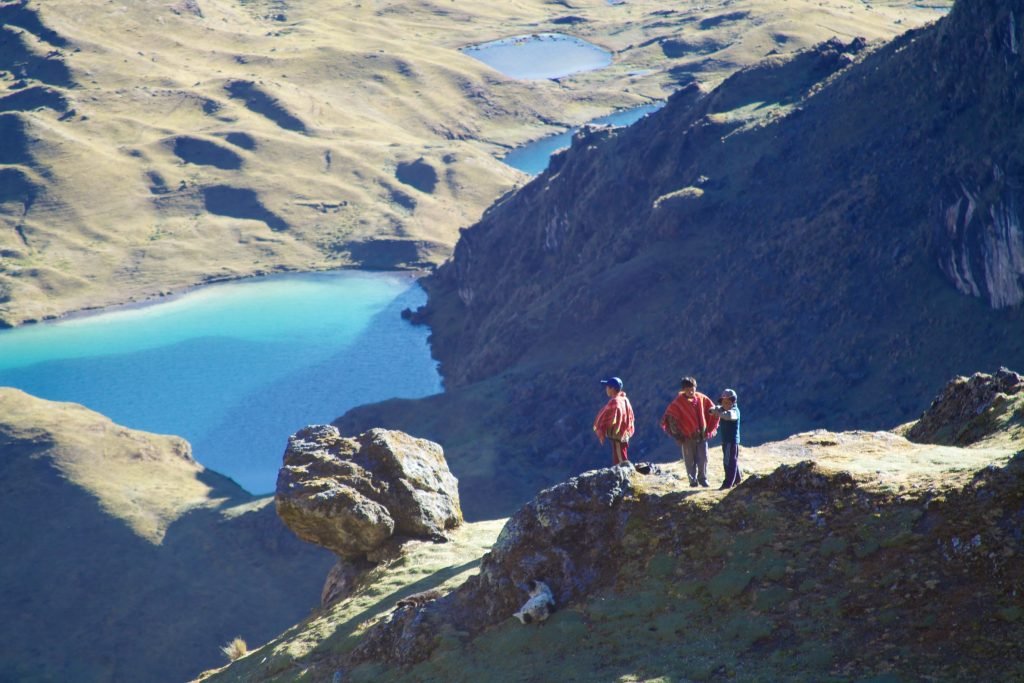
This combined trek is the only multi-day Inca Trail alternative that enters Machu Picchu through the Sun Gate as it will include traversing the last sections of the Inca Trail. After passing through the Andean villages of the Lares Valley during the first two days, hike the last leg of the Inca Trail, which leads to the ancient Inca citadel of Machu Picchu.
Details of the trek:
- Duration: 4 days/3 nights
- Difficulty: Moderate
- Highlights: Breathtaking Andean landscapes, local culture and exclusive entrance to Machu Picchu through the Sun Gate.
- Starting altitude: 3,750 m (12,300 ft)
- Maximum altitude: 4,450 m (14,600 ft)
- Total distance: 46 km (46 miles)
Lares + Inca Trail 2 days vs. Inca Trail
| Lares + 2-day Inca Trail | Inca Trail | |
| Duration and distance | 4 days, 28 miles | 4 days, 30 miles |
| Advance permit required. | Yes, the 2-day Ica Trail permit must be booked in advance. However, the Lares portion of the route does not require a permit. | Yes, the 4-day Inca Trail permit must be booked in advance. |
| Arrival to Machu Picchu | Arrival by foot via the Sun Gate | Arrival on foot through the Sun Gate |
| Camping or hotel nights | 2 nights of camping, 1 night in a hotel | 3 nights camping |
| Porters | Pack animals during day 1 and 2. Pack animals are not allowed on the Inca Trail. | Personal porters can be hired in advance. No pack animals are allowed on the Inca Trail. |
Lares + Inca Trail 2-day Itinerary
Day 1
Like the 4-day Lares trek, this excursion explores the small villages of the Lares Valley. Beginning in Huacawasi, travelers will have the opportunity to learn about village customs before beginning their ascent up to the highest pass, Ipsayccasa. You will be able to take in the breathtaking views of the snow-capped Veronica and surrounding peaks before descending to Lake Ipsaycocha for the night.
Day 2
Your hike will begin early in the morning to descend to the community of
Patacancha, characterized by its colorful textiles and traditional Quechua culture. We will then visit the archaeological site of Pumamarka and other smaller sites en route to Ollantaytambo.
Day 3
This morning, you will head to the Ollantaytambo train station to take the train to Km 104. When you get off the train, you will check in at the entrance of the two-day Inca Trail to begin your remaining trek to Machu Picchu.
While hiking the Inca Trail to Machu Picchu, hikers will pass two archaeological sites of great interest. Chachabamba and Wiñay Wayna are notable sites on the way to Inti Punku, the Sun Gate. Take some photos of Machu Picchu in the afternoon light before heading into town for a restful stay at a Machu Picchu hotel.
Day 4
On the last day of the trek you will return to the citadel of Machu Picchu by bus for a morning guided tour of the sanctuary. After exploring the citadel thoroughly, head to the train station for an afternoon train back to Cusco.
Optional activity: Hike to Machu Picchu or Huayna Picchu Mountain on this last day. Permits are limited and must be obtained in advance.
4. Choquequirao Trek
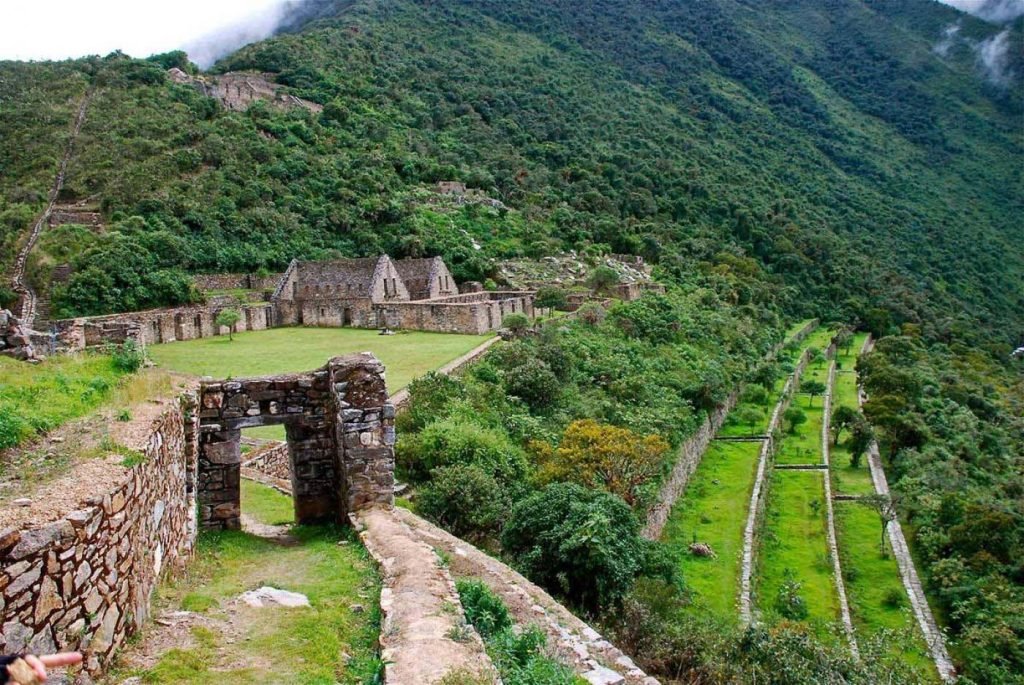
The Choquequirao route is considered one of the most difficult ancient Inca built trails in Peru. While the hike is difficult due to its geographical location, the extra effort makes your experience of the ancient Inca citadel at the end much more rewarding.
The most common itinerary is 8 days and 7 nights. The trail will take travelers through the Rio Blanco valley to the high elevations of the sacred mountain passes. Trekkers will have the opportunity to visit rarely seen ruins that are difficult for travelers to access, as well as experience the diversity of ecosystems for which the region is known. From high-altitude plains and lush river valleys to tropical Andean forests, this alternative route to the Inca Trail will show you the dramatic contrasts of the heart of the ancient Inca empire.
Trekking Facts:
- Duration: 8 days/7 nights
- Difficulty: Challenging
- Highlights: Choquequirao ruins, condors, waterfalls and hot springs.
- Starting altitude: 2,800 m (9,186 ft.)
- Maximum altitude: 4,680 m (15,355 ft)
- Total distance: 100 km (62 miles)
Choquequirao Trek vs. Inca Trail
| Choquequirao Trek | Inca Trail | |
| Duration and distance | 8 days, 62 miles | 4 days, 30 miles |
| Advance permission required | No | Yes, 4-day Inca Trail permit must be reserved in advance. |
| Arrival to Machu Picchu | Arrival by bus | Arrival on foot through the Sun Gate |
| Camping or hotel nights | 6 nights camping, 1 night in hotel | 3 nights camping |
| Porters | Pack animals can help carry belongings during day 7. | Personal porters can be hired in advance. No pack animals are allowed on the Inca Trail. |
Choquequirao Trek Itinerary
Day 1
The trek starts in the small village of Cachora, which is about 3.5 hours by bus from Cusco. Walking on relatively flat terrain, hikers get their first glimpse of the majestic Apurimac Canyon and the Apurimac River before seeing Choquequirao in the distance.
Day 2
On the second day, hikers will descend into the Apurimac River valley in order to cross over a suspension bridge. You will have to ascend through a winding route before reaching the archaeological complex of Choquequirao where you will explore and camp for the night.
Along the way, visitors will witness the gradual change of microclimates indicated by the variation of vegetation. It is likely that hikers will see the famous Andean condor flying overhead, as this region is its homeland.
Day 3
Your journey continues exploring the nine different areas of Choquequirao. Upon leaving Choquequirao, the trail winds through the lush Rio Blanco Valley, where hikers will be able to see the ancient agricultural terraces built and used by the indigenous people for centuries as the main way to take advantage of the microclimates for their agriculture.
Day 4
During the fourth day, you will have to cross an Andean rainforest on your way to the Andean highlands. You will be able to observe archaeological sites of the Vilcabamba mountain range in the distance. Trekkers continue to Yanama, a small village surrounded by mountains.
Day 5
The fifth day is when the trail passes through the highest elevation on the entire route, 4,680 meters (15,355 feet) above sea level. This is undoubtedly the most challenging and demanding day of the trek, but travelers are rewarded with picturesque views of the surrounding snow-capped mountains, such as Salkantay and Pintuyo with their crests piercing the clouds.
Day 6
Descend to the village of Winaypocco, with its subtropical flora and fauna, waterfalls and tranquil natural baths. You will have the opportunity to visit the locals of this village to learn more about the locally grown granadilla, coffee and avocado.
Day 7
Hikers will continue the descent until they reach the Lucmabamba Valley. Climbing up, hikers will be able to visit Llactapata, an archaeological site that has a wonderful view of Machu Picchu from afar. Trekkers will continue to Aguas Calientes by train, where they can relax and rest in a comfortable hotel in Machu Picchu town.
Day 8
This morning you will head to the entrance of Machu Picchu by bus. You will enjoy the mystical site with your guide before starting the optional hike up Huayna Picchu or Machu Picchu mountain for breathtaking aerial views. After spending the morning at Machu Picchu, you will return to the village at the foot of the wonder to have lunch and take the train back to Cusco.
Permits to climb Machu Picchu Mountain and Huayna Picchu are limited and must be obtained in advance.
Alternative options:
A faster 4-day/3-night version is available for hikers who want to see Choquequirao and do not have enough time to complete the entire itinerary. However, this new route returns to Cusco instead of continuing the trek to Machu Picchu. Travelers can visit Machu Picchu by train from Cusco or the Sacred Valley before or after a 4-day trek to Choquequirao.
There is an extended 10-day/9-night option, which covers the same trail at a more leisurely pace where you can take your time to enjoy each iconic point along the route.
5. Vilcabamba Trek
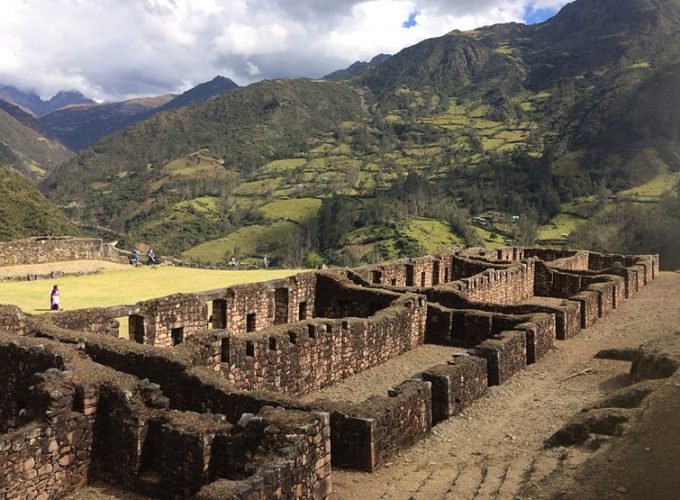
Also known as the jungle trail, the Vilcabamba trail winds through the tropical rainforests of the Andes north of Machu Picchu. It is a trek unlike any other in the region, spanning the course of 5 days and 4 nights through the picturesque Vilcabamba mountain range.
Trekking Facts:
- Duration: 5 days/4 nights
- Difficulty: Moderate
- Highlights: Intact Inca ruins, unique cloud forest landscape, local farms.
- Starting altitude: 2,910 m (9,550 ft.)
- Maximum altitude: 4,500 m (14,765 ft)
- Total distance: 50 km (31 miles)
Vilcabamba Trek vs. Inca Trail
| Vilcabamba Trek | Inca Trail | |
| Duration and distance | 5 days, 31 miles | 4 days, 30 miles |
| Advance permission required | No | Yes, the 4-day Inca Trail permit must be booked in advance. |
| Arrival to Machu Picchu | Arrival by bus | Arrival on foot via the Sun Gate |
| Camping nights or hotels | 3 nights camping, 1 night in a hotel | 3 nights camping |
| Porters | Pack animals can help carry belongings during day 4. | Personal porters can be hired in advance. No pack animals are allowed on the Inca Trail. |
Itinerary of the trek to Vilcabamba
Day 1
The Vilcabamba trail begins in the remote village of Huancacalle, where you will find Inca ruins that are rarely visited by tourists but are definitely a very interesting place to start your trek. One of the most unique is the White Rock, known as Yuraq Rumi, which is an unusually large carved stone probably used for religious purposes. Also in the area is Vitcos, residence of the last Inca emperor built in the 16th century.
Day 2
Trekkers will continue along the ancient trail, which will provide unique opportunities to see the large amount of subtropical vegetation, including naturally grown coffee and coca, which help support the families that live off agriculture and inhabit the remote villages of the Vilcabamba mountain range.
Day 3
Meandering towards Machu Picchu surrounded by snow-capped mountains, trekkers will experience some of the most impressive scenery of the Andean rainforests amidst the high mountain peaks.
Day 4
Arriving in Aguas Calientes on the fourth day of the trek, travelers can rest in the comfort of a hotel, as well as relax in the thermal baths for which the city is named, these baths possess great medicinal and restorative properties and a visit is highly recommended after the exhaustion your body was exposed to after the days of trekking.
Day 5
On the fifth day, hikers take a short bus ride to the entrance of Machu Picchu in order to explore the ancient citadel. This is truly a rewarding experience after 5 days of high altitude jungle trekking.
Optional activity: Hike to Machu Picchu or Huayna Picchu Mountain on this last day. Permits are limited and must be secured in advance.
Alternative Options:
An alternative option of 7 days/6 nights trekking in the Vilcabamba mountain range is available. However, this option does not go to Machu Picchu, but to Espiritu Pampa, further into the Vilcabamba mountain range.
6. Ausangate Trek
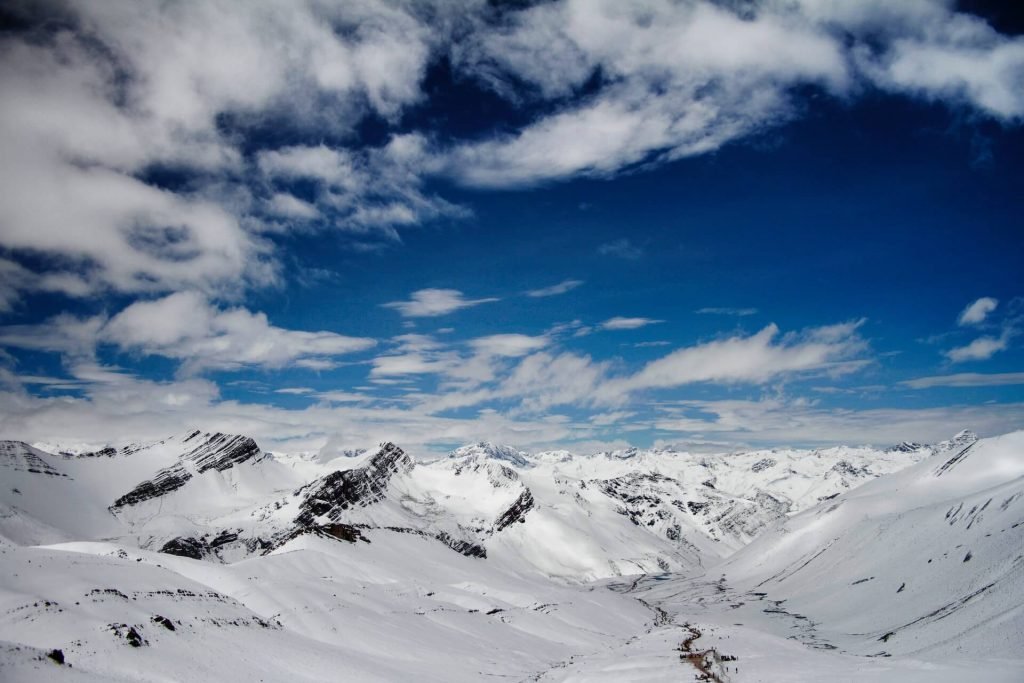
Although the Ausangate Trek does not end at Machu Picchu, this alternative to the Inca Trail, which passes through the Andean mountains is truly out of the ordinary. The Ausangate goes around its namesake, the Ausangate Mountain, located about 100 kilometers east of Machu Picchu. It is one of the most beautiful and sacred treks in Peru, which is also very little traveled.
The route to Apu Ausangate, which in Quechua means sacred mountain Ausangate, offers spectacular views of the surrounding mountain range, as well as a sacred mysticism that locals celebrate every year. The 6-day trek is most famous for the Qoyllur Rit’i pilgrimage, which takes place every year during the month of June to honor the harvest season and indigenous heritage.
Details of the trek:
- Duration: 6 days/5 nights
- Difficulty: Challenging
- Highlights: Glaciers and lagoons, Andean fauna, extraordinary mountain views.
- Starting altitude: 4000 m (12,123 ft)
- Maximum altitude: 5,125 m (16,814 ft)
- Total distance: 66 km (66 miles)
Ausangate Trek vs. Inca Trail
| Ausangate Trek | Inca Trail | |
| Duration and distance | 6 days, 41 miles | 4 days, 30 miles |
| Advance permit required. | No | Yes, the 4-day Inca Trail permit must be booked in advance. |
| Arrival at Machu Picchu | Machu Picchu is not a part of the trek. | Arrival on foot through the Sun Gate. |
| Camping nights or hotels | 5 nights camping | 3 nights camping |
| Porters | Pack animals can help carry belongings along the route. | Personal porters can be hired in advance. No pack animals are allowed on the Inca Trail. |
Ausangate Itinerary
Day 1
From Cuzco, head to the village of Tinki to begin the Ausangate trek. Trekkers will traverse winding paths through the Andean mountains and pass through traditional indigenous villages. Views of the Vilcanota mountain range and a panoramic view of Cusco are other highlights of the first day.
Day 2
Passing through breathtaking mountain scenery, you will arrive at the destination of Upis where you will have the opportunity to explore the nearby area. Visit relaxing thermal lagoons and mystical glaciers resting around Ausangate Mountain for a unique and unforgettable Andean experience.
Day 3
Your route continues to the Arapa Pass to enjoy incredible views of Apu Ausangate and the surrounding mountain range. Descend to Laguna Roja, Pukacocha, a tranquil lake nestled between peaks, where you will spend the night.
Day 4
Ascent to the second pass, Apacheta, overlooking the snow-capped peaks of the Vilcanota range. We will descend, having a stop for lunch, and then ascend again with this to the highest elevation point during the trek: Palomani Pass. Finally, you will have to descend again to the Qampa Valley to camp, with the opportunity to see condors, chinchillas and vicuñas in their natural habitat.
Day 5
Passing by huge glaciers and snow-capped mountains, the trek continues to the Ticllacocha lagoon and then the Qampa pass. We will camp on the shores of Lago Verde, Qomercocha.
Day 6
On the sixth day, trekkers pass along a chain of clear, icy Andean lagoons before crossing a meadow where alpacas and llamas graze. Just after the meadow, you reach Pacchanta, a small village where you can relax in its hot springs. After relaxing your muscles, you will return to Cuzco by car.
There are many great alternatives to the Inca Trail for hiking in the Cuzco region. If the Classic Inca Trail is exhausted, you can be sure that you will be able to visit Machu Picchu and hike through the region, just as the Incas did more than five hundred years ago and along routes that were built by the same culture. You just have to make sure that you are in good physical condition and that you are prepared for a historical and cultural adventure.

